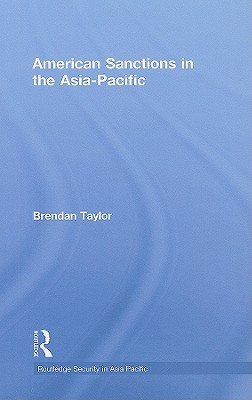
- We will send in 10–14 business days.
- Author: Brendan Taylor
- Publisher: Routledge
- ISBN-10: 0415423503
- ISBN-13: 9780415423502
- Format: 16 x 23.4 x 1.5 cm, kieti viršeliai
- Language: English
- SAVE -10% with code: EXTRA
Reviews
Description
Sanctions are a persistent - many would argue increasingly central - component of American efforts to shape foreign policy outcomes in the Asia-Pacific. The use of sanctions in the context of two of the most pressing regional security issues currently on Washington's radar - the ongoing North Korean nuclear crisis and the management of China's emergence - clearly reaffirms this pattern. This book provides the first comprehensive treatment of US sanctions policy in the Asia-Pacific. Using the Bill Clinton and George W. Bush presidencies as a basis for comparison, it examines nine prominent episodes involving the US use of sanctions toward countries in this economically and strategically vital part of the world. In each case it addresses the reasons why sanctions were employed in the first place, the precise nature of sanctions and how they operated in practice, before evaluating their effectiveness. Finally, it identifies common trends that emerge from this analysis and draws out practical implications for US sanctions policy, in particular when and how the US can - and cannot - optimally use sanctions in an Asia-Pacific context.
EXTRA 10 % discount with code: EXTRA
The promotion ends in 22d.02:17:33
The discount code is valid when purchasing from 10 €. Discounts do not stack.
- Author: Brendan Taylor
- Publisher: Routledge
- ISBN-10: 0415423503
- ISBN-13: 9780415423502
- Format: 16 x 23.4 x 1.5 cm, kieti viršeliai
- Language: English English
Sanctions are a persistent - many would argue increasingly central - component of American efforts to shape foreign policy outcomes in the Asia-Pacific. The use of sanctions in the context of two of the most pressing regional security issues currently on Washington's radar - the ongoing North Korean nuclear crisis and the management of China's emergence - clearly reaffirms this pattern. This book provides the first comprehensive treatment of US sanctions policy in the Asia-Pacific. Using the Bill Clinton and George W. Bush presidencies as a basis for comparison, it examines nine prominent episodes involving the US use of sanctions toward countries in this economically and strategically vital part of the world. In each case it addresses the reasons why sanctions were employed in the first place, the precise nature of sanctions and how they operated in practice, before evaluating their effectiveness. Finally, it identifies common trends that emerge from this analysis and draws out practical implications for US sanctions policy, in particular when and how the US can - and cannot - optimally use sanctions in an Asia-Pacific context.


Reviews